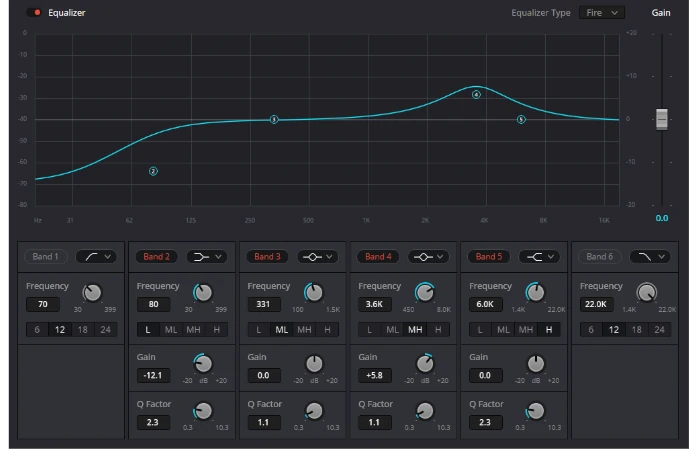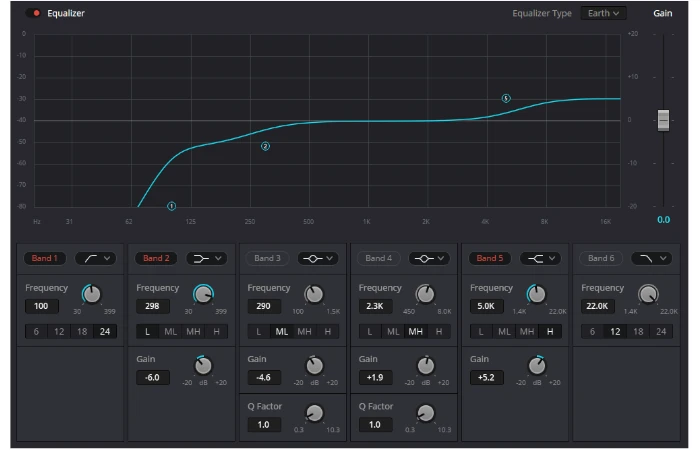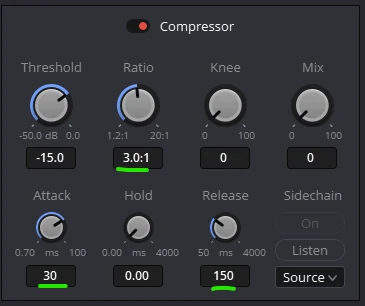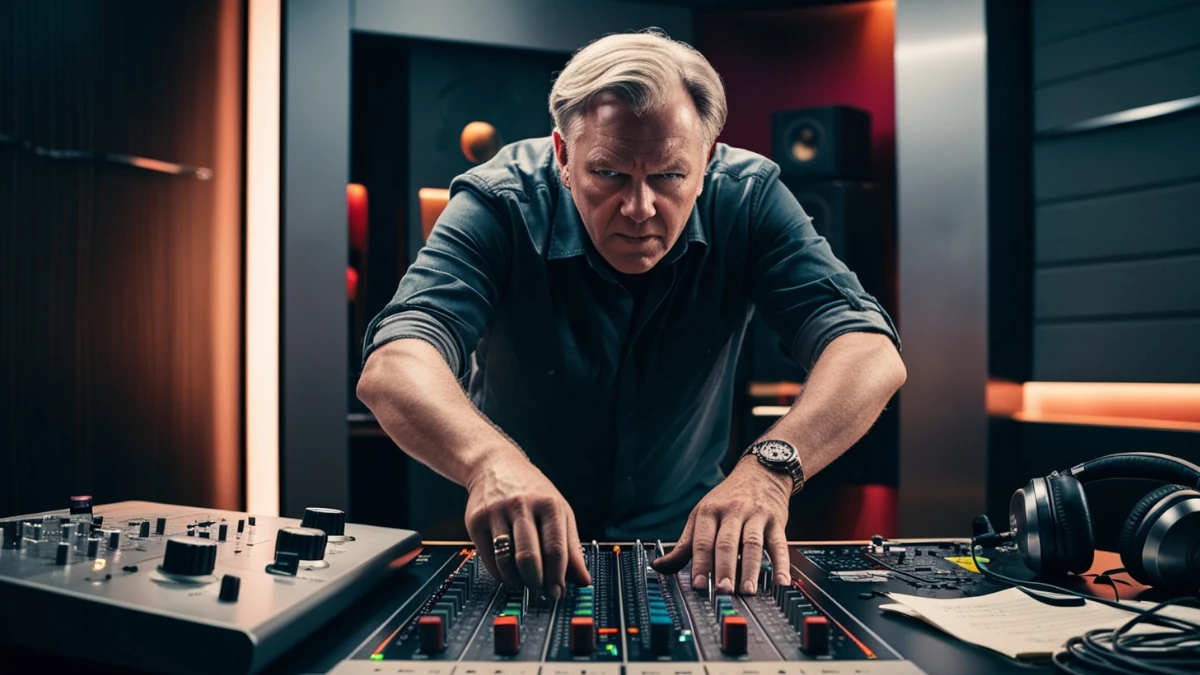HSS Podcast - Balancing Your Vocals: Top Mixing Tips for a Perfect Track
HSS Staff
Ever wonder why some songs instantly grab your attention while others fall flat? The secret often lies in how the vocals are mixed. Mixing vocals is more than just another step in music production; it’s an art form that can elevate a track from average to sublime. Intrigued by the magic of a perfectly blended vocal track? You’re in the right place! Let’s dive into the world of mixing and explore essential tips that will help you make any vocal stand out without overwhelming the rest of the mix. Get ready to transform your tracks and captivate listeners with every note!
1. EQ Techniques for Clarity and Presence
Mixing vocals to sit perfectly in a mix can often feel like an art form, but with the right EQ techniques, you can achieve clarity and presence that helps vocals shine. Equalization, or EQ, is one of the most powerful tools at your disposal. It allows you to shape the frequency content of your vocals, ensuring they are neither lost nor overwhelming in the mix.
Identify Problematic Frequencies

Begin by identifying any problematic frequencies. For instance, muddiness often lurks around the 200-500 Hz range. Use a parametric EQ to gently reduce these frequencies, but be cautious not to strip too much warmth. Conversely, boosting frequencies between 2 kHz and 4 kHz can enhance vocal presence, cutting through the mix without sounding harsh.
The Importance of High-Pass Filtering
High-pass filtering is another essential step. By cutting out unnecessary low-end rumble below 80-100 Hz, you leave space for bass instruments and kick drums. This action ensures that your vocals are not competing with other low-frequency elements, thus maintaining clarity.
Practical Example

Imagine mixing a pop track where the vocal needs to be upfront. Begin by applying a high-pass filter at around 100 Hz. Next, gently cut around 300 Hz to reduce muddiness. If the vocal lacks brightness, try a subtle boost around 5 kHz for added air.
Conclusion
Ultimately, EQ is about subtlety and balance. Experimentation is key; each vocal and mix is unique. By understanding and applying these EQ techniques, your vocals can achieve the clarity and presence necessary to captivate listeners, ensuring they sit well and shine in any mix.
2. Compression Strategies for Consistent Dynamics
Mixing vocals to sit well in a mix can often feel like trying to balance on a tightrope. One of the key tools in achieving this balance is compression. Compression helps manage the dynamics of a vocal recording, ensuring that softer parts are audible and louder sections don’t overpower the mix.
Understanding Compression Basics
To get started, it’s essential to grasp what compression does. Imagine a vocalist singing softly in some parts and loudly in others. Without compression, the softer parts might get lost, and the louder parts could dominate. Compression evens out these dynamics, making the vocal performance more consistent.
Setting Up Your Compressor

A practical example involves setting up a compressor with a moderate ratio, such as 3:1. This means that for every 3 dB the input level exceeds the threshold, the output will only increase by 1 dB. Start with a threshold set where the vocal hits its loudest peaks, and adjust the attack and release times. An attack time of around 10-30 ms allows transients through, preserving the vocal’s natural attack. A release time of 50-150 ms ensures the compressor recovers quickly enough to catch the next peak.
Case Study: Taming Wild Performances
Consider a real-life application where a singer’s performance is dynamic and expressive, but inconsistent. By applying compression, the engineer can control these dynamics, allowing the vocal to remain present throughout the mix. In Ariana Grande’s tracks, for instance, subtle compression enhances her emotive vocal style without losing its impact.
Practical Tips
- Use Sidechain Compression: By sidechaining your vocal to a bus, you can subtly duck other instruments like pads or guitars every time the vocal is present, creating more space.
- Parallel Compression: Blend a heavily compressed version of the vocal with the dry signal to add body and presence without sacrificing dynamics.
- Listen in Context: Always adjust compression settings while the full mix is playing. What sounds good in solo might not work in the mix.
By applying these strategies, your vocals will not only sit well in the mix but also maintain their emotional integrity and clarity. Remember, the goal is not to squash the life out of the vocal but to enhance its presence and consistency.
3. Utilization of Reverb and Delay for Depth and Space
Creating that perfect blend in your mix often involves using reverb and delay to give vocals a sense of depth and space. These tools are your best friends when it comes to making vocals sit well in a mix without overpowering other elements.
Reverb adds a natural ambience and can make vocals sound as if they are being performed in a particular space. For instance, using a plate reverb can give vocals a vintage feel, reminiscent of classic recordings. On the other hand, a hall reverb can create the illusion of a grand, open space, which might be perfect for a ballad.
Delay, however, offers a different kind of spatial effect. A short slapback delay can thicken vocals and add character without making them sound distant. Meanwhile, a longer delay can create a call-and-response effect, adding rhythmic interest to the mix.
Practical tips? Start by applying a subtle reverb to your vocal track. Use the pre-delay setting to ensure the reverb doesn’t clutter the initial vocal hit. This keeps the vocal clear and upfront. For delay, try syncing it to your project’s tempo and adjust the feedback to taste. A little goes a long way, so start with lower levels and increase as necessary.
Incorporating reverb and delay effectively can transform a flat vocal track into a dynamic element of your mix, enhancing the overall listening experience. Experiment with different settings and listen to how they change the perception of space and depth in your mix.
4. Automation for Balancing and Emotional Impact
Mixing vocals to sit well in a mix is akin to painting with sound. It’s about ensuring the vocals are neither too overpowering nor too buried in the track. One of the most effective techniques to achieve this balance is through automation. Automation allows you to dynamically adjust the volume, panning, effects, and more throughout the song, enhancing both balance and emotional impact.
Balancing Dynamics
Consider a track where the vocalist starts softly and gradually builds intensity. Without automation, the softer parts might get lost, and the louder sections could overpower the rest of the mix. Here, volume automation becomes a lifesaver. For instance, gently increasing the volume during quieter verses ensures clarity, while slightly reducing it during intense choruses maintains harmony with other elements.
Practical Tip: Use your DAW’s automation lanes to draw curves that follow the emotional contour of the song. Listen critically and adjust until the vocals feel consistently present yet never dominating.
Enhancing Emotional Impact
Beyond balancing, automation can emphasize emotional nuances. Imagine a heartfelt lyric that deserves extra emphasis. Automating a touch of reverb or delay on that phrase can make it stand out, creating a moment of emotional resonance.
Example: In Adele’s “Hello,” notice how the reverb swells during key emotional phrases. This subtle automation deepens the listener’s connection to the lyrics.
Practical Implementation
Start simple. Listen to your mix and identify areas where the vocals need a little nudge. Create automation points and gradually adjust. Remember, subtlety is key. Overdoing it can make the mix sound robotic, losing the natural feel.
By harnessing automation, not only do you balance the vocals, but you also craft an emotional journey that resonates with listeners, making your mix truly unforgettable.
5. Layering and Harmonization Techniques
When it comes to making vocals sit well in a mix, layering and harmonization can be transformative. These techniques add depth and richness, ensuring that the vocals don’t just blend but stand out with clarity and emotion.
Layering for Texture
Layering involves recording multiple takes of the same vocal line and stacking them together. This method enhances the texture and fullness of the vocals. For example, duplicating the lead vocal track and adding a slight pitch shift or time delay can create a chorus effect, making the vocal sound lush and wide. Imagine a pop ballad where the lead singer’s voice feels enveloping and grand—layering can achieve this.
Practical Tip: When layering, ensure that the layers are tightly aligned. Use tools like automatic alignment plugins or manually adjust the timing to prevent any phase issues that can make the mix muddy.
Harmonization for Depth
Harmonization involves creating additional vocal tracks that harmonize with the lead. This can be done by singing or using pitch correction tools like Melodyne or Auto-Tune to shift pitches appropriately. Think of a gospel choir where each layer of harmony contributes to the emotive power of the piece—harmonization can evoke similar feelings in a mix.
Practical Tip: Start with simple thirds or fifths above or below the melody for a classic harmony effect. Experiment with various intervals to see what best complements the mood of the track.
By integrating these techniques, vocals will not only sit well in a mix but also elevate the overall sonic experience, bringing a professional polish and captivating the listener.
Conclusion: Elevate Your Mix with These Vocal Mixing Tips
In conclusion, achieving that perfect vocal mix requires more than just technical skills—it’s a harmonious blend of art and science. By focusing on the essential techniques discussed, you can ensure your vocals truly shine and resonate with the essence of your track. Remember to start with a clean and properly recorded vocal. Precise EQing helps carve out space in the frequency spectrum, while compression balances dynamics to keep vocals present and impactful. Utilizing reverb and delay effectively adds dimensions without overwhelming the mix. Don’t forget to experiment with automation for dynamic variation throughout your track.
Moreover, referencing professional mixes and consistent practice will hone your skills over time. Listening critically to well-mixed vocals will give you insights into how the pros strike that perfect balance, guiding you to make decisions that serve your music best.
So, why wait? Next time you’re in your DAW, try out these techniques and listen to how your mix transforms. With each project, you’ll notice improvements and become more adept at creating emotionally engaging music. Ready to take your vocal mixing to the next level? Implement these strategies and share your new creations with the world—your audience awaits!

